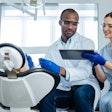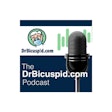
D0415, D0416, D0417, and D0418
Diagnostic tests for viral cultures are essential in helping dentists determine the specific viral agent responsible for a patient's symptoms. This process is a testament to the crucial role of the dental hygienist, who often notes symptoms warranting more scrutiny, thereby playing a vital part in resolving a patient’s dental health issue.
The diagnostic section of the Code on Dental Procedures and Nomenclature (CDT code) explores data gathering and the intuitive and pragmatic skills needed to evaluate patients properly. These are pivotal to creating a course of care for every patient the dentist or health provider sees.
The dentist and the dental hygienist empower patients to choose better health by being united in evaluating patient healthcare needs. As integral dental team members, hygienists play a significant role in recommending appropriate interventions and preventive measures based on their findings. This empowerment is a testament to their importance in the dental team.
Knowledge of coding for diagnostic procedures remains a challenge and an even more critical part of the healthcare provider’s relationship with the patient. Coding for what you do is essential for proper billing and for building patient trust.
The following provides a scenario illustrating the process of collection and analysis.
Collection and analysis
Code D0415, which collects microorganisms for culture and sensitivity, is under "Tests and Examination" in the CDT manual. Before executing CDT Code D0415, the dentist evaluates the patient’s dental condition and determines the need for microbiological analysis. This evaluation involves examining the patient’s symptoms, conducting a thorough dental examination, and reviewing their medical history.
If there are bacterial or fungal infection indications, the dentist may recommend collecting microorganisms for culture and sensitivity testing. In the patient evaluation process, the dentist may also consider factors such as the patient’s response to previous treatments, systemic diseases that could affect healing or increase the risk of infection, and the potential for antibiotic resistance. This comprehensive evaluation helps the dentist make informed decisions regarding the need for microbiological analysis and the appropriate course of treatment for the patient’s dental infection.
Collecting samples from the site suspected of infection includes dental plaque, saliva, pus, or tissue samples. Following strict aseptic techniques will ensure the integrity and accuracy of the collected samples. Proper isolation and handling of the samples are necessary to prevent contamination and obtain reliable results. Collecting samples before starting antibiotic therapy is ideal for accurately representing the causative microorganisms.
Once the samples are collected, they are transported to a laboratory equipped for microbiological analysis. Ensure proper packaging and labeling to maintain the integrity of the samples during shipment. Send samples to the laboratory as soon as possible to ensure accurate culture and sensitivity testing. Cold packing or temperature-controlled containers may ensure the samples remain viable during transit. Include necessary documentation and information about the patient, the suspected infection, and any specific instructions for the laboratory personnel.
The collected samples undergo microbiological analysis in a laboratory specific for these purposes. The cultured microorganisms are then identified using microscopy, biochemical tests, and molecular methods. Identification allows the dentist to determine the specific organisms responsible for the infection.
After identifying the microorganisms, sensitivity testing is performed to determine their susceptibility to different antibiotics. The results indicate which antibiotics are most effective in inhibiting or killing specific microorganisms, which is crucial in guiding the dentist’s choice of antibiotics for effective treatment.
Based on the culture and sensitivity testing results, the dentist can then create a targeted treatment plan for the patient. This personalized approach improves treatment outcomes and reduces the risk of antibiotic resistance.
Tips for coding collection and culturing procedures
D0415 -- Collection of microorganisms for culture and sensitivity -- is reported when testing for the type and concentration of microorganisms (usually bacteria) in the oral microbiome. This process helps to determine the endpoint of periodontal treatment. Insurance considerations show that the procedure is rarely reimbursed either because it is not a covered expense or because the evidence supporting using the code is not sufficient. It helps to submit a narrative.
D0416 -- Viral culture -- is a diagnostic test used to identify viruses, most commonly oral herpes simplex. OralDNA Labs has a viral culture test called OraRisk HPV. This is an important test to determine whether patients continue to test positive for HPV or have cleared the virus. (If the virus persists, the risk of head and neck cancer increases.) A narrative and copies of laboratory reports can help with reimbursement if it is a covered expense under the policy.
D0417 -- Collection and preparation of saliva sample for laboratory diagnostic testing -- can be used for periodontal pathogens, caries pathogens, HIV, and all sorts of microorganisms. Narratives with a diagnosis may help with reimbursement.
D0418 -- Analysis of saliva sample -- can also be used for in-office chairside lab tests. These tests analyze saliva production, consistency and viscosity, salivary buffering capacity, pH, etc. This code can also be used for HPV risk. Narratives and lab test results are advised in billing.
Coding for cultures is often underutilized, mostly because of the lack of knowledge about what is involved in gathering data and samples. The dentist and hygienist, working together, can improve patients’ health by digging deeper into the root causes of dental health issues.
Editor's note: References are available upon request.
Estela Vargas, CRDH, is the founder and CEO of Remote Sourcing, a dental insurance billing and revenue recovery service. She is a graduate of Miami Dade College's dental hygiene program. Vargas' extensive background in the clinical arena of dentistry is coupled with her experience as a practice administrator and business executive.
The comments and observations expressed herein do not necessarily reflect the opinions of DrBicuspid.com, nor should they be construed as an endorsement or admonishment of any particular idea, vendor, or organization.



















